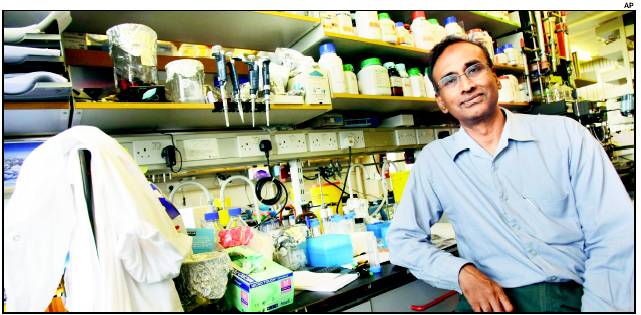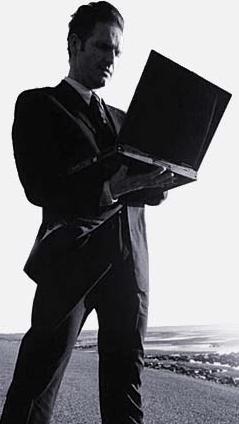|
Man who
decoded life atom-by-atom
Venkatraman Unravelled Mystery Of How Protein Is Built By A
Ribosome
TIMES
INSIGHT GROUP
As India
celebrates another Nobel moment, science salutes the work of
Venkatraman Ramakrishnan, who painstakingly, atom by atom,
decoded the structure of ribosomes those tiny worksheds in each
cell where life is built.
Ribosomes are small granules, about 20 nanometers in width
(1 nanometer = one billionth of a meter) found in all cells.
Using the code carried by DNA molecules, they build proteins.
There are tens of thousands of proteins in the body and they
all have different forms and functions. They build and control
life at the chemical level. Hemoglobin that transports oxygen is
a protein. So are all antibodies that defend us against
infections. And so are all hormones, like insulin, that conduct
the finely tuned chemical orchestra of our body. Enzymes,
crucial to breaking down food for the bodys use, are also
proteins.
One of the mysteries confronting scientists was how do
proteins actually get built in the cells. The blueprint was
known to be the double helix of the DNA. It was also known that
messenger RNA molecules carry a copy or a template of a
particular protein to the small granular ribosomes. But the
exact structure of the ribosome, and how it converts a molecular
code into a physical molecule of protein was only hazily known.
VR unlocked the mystery using technique called X-ray
crystallography. Think of it as a kind of 3-D photography using
X-rays. In 2000, he built up a picture of a particular part of
the ribosome. Later he built the whole picture of every atom in
a ribosome, which contain thousands of atoms. This helped in
revealing how exactly the template brought by the messenger RNA
is used to construct a protein molecule.
To understand the working of the ribosome is to understand
one of the key processes of life.
And, this has staggering implications for human healthcare
and synthesing newer antibiotics. This knowledge can be turned
around to disable the ribosomes of hostile bacteria that cause
diseases in human body. Already many antibiotics are using this
knowledge to kill invading bacteria. They target the ribosomes
in the bacteria and stop its functioning. Result: the bacteria
dies.
The two other scientists who shared this years Chemistry
Nobel, Thomas A. Steitz of US and Ada E. Yonath of Israel too
had worked on the same lines, and their combined knowledge has
been harnessed for practical use.
VRís work also reveals what has become quite common today
how modern science uses and builds upon earlier scientific
discoveries. The tool that he used X-ray crystallography - was
discovered back in early 20th century. This earned Max Von Laue
a Nobel in 1914, and the father-son Bragg duo a joint Nobel in
1915. Several scientists used this method and won Nobels for
working out structures of things like penicillin, vitamins and
cholestrol, and diverse minerals.
The discovery of the ribosome by Georges Palade won him the
Nobel in 1958. Several other scientists have won Nobels for
working out the DNA structure (Watson and Crick), RNA functions,
among others.

|





